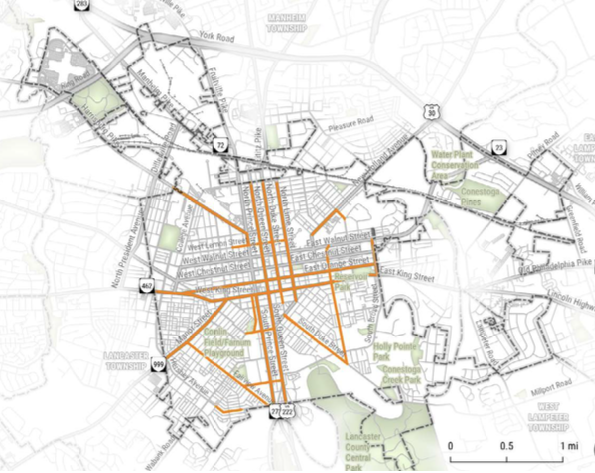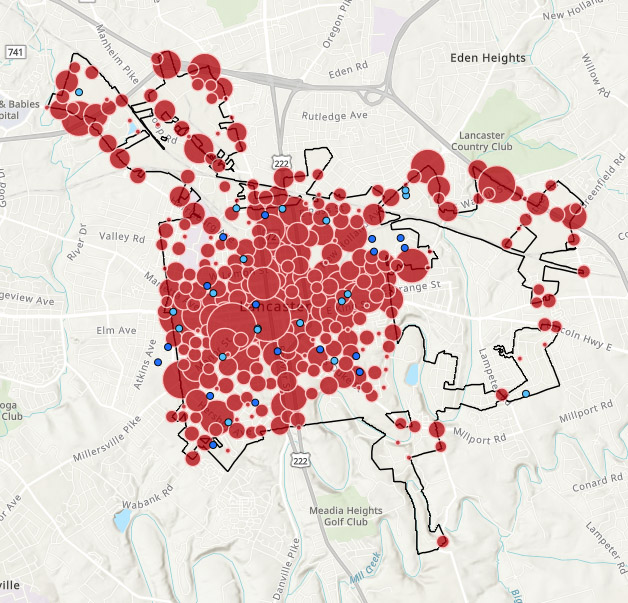What is a High Injury Network?
The High Injury Network (HIN) is a subset of streets in the city where the majority of serious inury and fatal crashes occur. It was developed using GIS mapping and a manual review. Crash data from PennDOT was mapped onto the city’s roadway network and queried to identify a subset of streets with the highest number of crashes within 20 feet. The manual review of the query results checked for gaps and extended some segments to include serious and fatal crashes at nearby intersections. The results were vetted by city staff and members of the Steering Committee.
Lancaster’s HIN contains some or all segments of 19 different streets. Lancaster’s HIN and HINs in other cities exhibit similar characteristics. These include:

